
by Scott Bronstad | Jan 26, 2023 | Cybersecurity, How To, Technology
Cybersecurity is a critical concern to secure data for offline device programming, as it ensures the integrity and confidentiality of the programming process. Below are several ways to implement cybersecurity in device programming, with tips on what you should be doing today, including access control, encryption, software updates, risk assessment/management, audits, and education.
Access control
Implementing strict access controls can prevent unauthorized access to the programming equipment and software. This can include physical security measures to secure data, such as security cameras and access cards, as well as software-based security measures, such as password protection and multi-factor authentication.
- Use security cameras to monitor access to the programming equipment and software.
- Use access cards or biometric authentication to control access to the programming equipment and software.
- Implement software-based security measures, such as password protection and multi-factor authentication.
- Regularly review and update access controls to ensure they are still effective.
- If possible, remove outside access to networks and the internet. No access makes it almost impossible to hack.
- Deeper dive here
Secure Data with Encryption
 Encrypting the programming data and communication between the programming equipment and software can secure data against data breaches and unauthorized access to the programming data.
Encrypting the programming data and communication between the programming equipment and software can secure data against data breaches and unauthorized access to the programming data.
- Use strong encryption algorithms to protect the programming data.
- Implement key management to ensure that only authorized personnel have access to the encryption keys.
- Regularly review and update encryption methods to ensure they are still effective.
- 9 best encryption software programs for 2023
Secure software updates
Regularly updating the programming equipment and software is important for keeping them secure. However, it’s important to ensure that these updates are coming from a trusted source and are properly authenticated before installation.
- Ensure that updates are coming from a trusted source and are properly authenticated before installation.
- Keep track of software version and updates history.
- Verify the authenticity of software updates and the update process.
Risk assessment and management
Conducting regular risk assessments and implementing a risk management plan can help identify and mitigate potential vulnerabilities in the programming process.
- Implement a risk management plan to mitigate identified vulnerabilities.
- Evaluate the effectiveness of the risk management plan and update it as needed.
- Deeper dive here
Regular security audits
Regularly auditing the programming process and equipment can help identify and address any security weaknesses. Treat cyber threats as you would an ISO audit.
- Use both automated and manual testing methods.
- Use third-party security experts to conduct regular security audits.
- Keep records of security audits and implement recommendations.
Employee education and awareness
Educating employees about the importance of cybersecurity and how to properly handle and protect programming equipment and data can help prevent human error-based security breaches.
- Provide regular cybersecurity training to employees.
- Create and implement security guidelines and policies.
- Encourage employees to report any suspicious activities or security breaches.
- Run regular cybersecurity drills and simulations.
Implementing these security measures can help ensure the integrity and confidentiality of the offline semiconductor device programming process and protect against potential cyber threats. While this article focuses on offline programming, many of these principles apply to other types of device programming as well. In short, it’s important to regularly review and update these security measures to ensure they stay effective in protecting against evolving cyber threats.
Learn More

by Scott Bronstad | Jan 25, 2023 | Cybersecurity, Technology
As technology continues to advance and evolve, the use of semiconductor devices has become increasingly prevalent in a variety of industries, including telecommunications, computing, and even healthcare. While these devices offer numerous benefits and capabilities, their programming and use also raise important ethical considerations.
Potential for Abuse
One significant ethical consideration related to semiconductor device programming is the potential for abuse of the devices. For example, in the realm of computing, programming a semiconductor device to hack into a computer system or access sensitive information without permission is clearly unethical. Similarly, programming a semiconductor device to facilitate identity theft or other forms of fraud is also unethical.
Hacking and Cybersecurity
Another ethical consideration related to device programming is the potential for malicious actors to exploit vulnerabilities in these devices to cause harm. For example, if a semiconductor device used in a critical infrastructure system, such as a power grid or water treatment plant, is vulnerable to hacking, it could potentially be manipulated to cause widespread disruption or damage; or programming a device used in a medical device to malfunction or deliver incorrect treatment could have serious consequences for the patient. Similarly, programming a semiconductor device used in transportation systems (such as self-driving cars) to malfunction could lead to accidents and harm to both passengers and bystanders.
Additionally, programming errors or vulnerabilities in semiconductor devices used in personal devices, such as smartphones or laptops, could leave individuals vulnerable to cyber-attacks such as data breaches or theft of personal information. It is important for manufacturers, developers, and operators to ensure that these devices are properly secured and tested for vulnerabilities to minimize these risks, and to have a plan in place to mitigate the damage of a successful attack.
Bias
A third ethical consideration related to semiconductor device programming is the potential for discrimination or bias. For example, programming a semiconductor device used in hiring or promotion decisions to favor certain groups or individuals based on characteristics such as race or gender could be considered unethical. Similarly, programming a semiconductor device used in credit or loan decisions to unfairly disadvantage certain groups or individuals could also be considered unethical.
Skynet
Certainly, one ethical consideration related to semiconductor device programming, albeit perhaps more far-fetched, is the potential for the development of artificial intelligence (AI) systems that are capable of autonomous decision-making. This is similar to the concept of Skynet, a fictional AI system in the Terminator franchise that becomes self-aware and turns against humanity. As the capabilities of semiconductor devices and AI systems continue to advance, it is important to consider the potential consequences and ensure proper safety measures and regulations are in place to prevent negative outcomes.
In order to address these ethical considerations, it is important for those involved in semiconductor device programming to consider the potential consequences of their actions and to ensure that their programming is ethical and responsible. This may involve implementing safeguards and controls to prevent abuse or misuse of the devices, as well as regularly reviewing and evaluating the programming to ensure that it is not causing harm or discrimination.
Ultimately, the ethical considerations of device programming highlight the need for ongoing dialogue and discussion about the responsible use of technology. By considering the potential consequences of our actions and making ethical choices, we can ensure that the benefits of semiconductor devices are maximized while minimizing any negative impacts.
Learn More
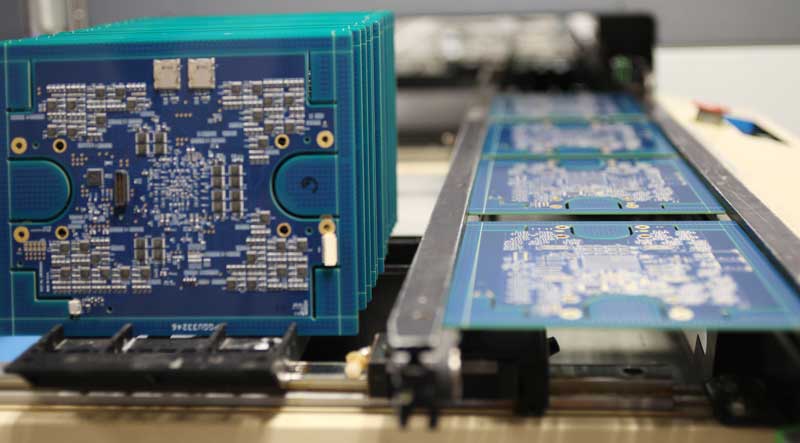
by Scott Bronstad | Jan 24, 2023 | How To, Technology
Which is best for your application?
Programming semiconductor devices is a crucial step in ensuring their proper functioning in electronic devices. There are several methods available for programming these devices, each with its own advantages and disadvantages. In this article, we will discuss three popular methods: in-system programming (ISP), offline programming, and Inline SMT Programming.
ISP Device Programming
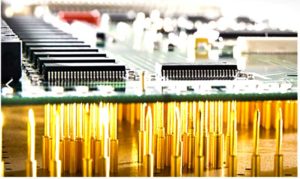
Bed-of-Nails fixture connects the PCB to the final test
In-system programming (ISP) is a method that involves programming the device while it is still in the final application or system. This can be done by connecting the device to a computer or other programming device through a specialized interface, such as a JTAG or SPI interface. ISP is a more cost-effective option for high-volume production as it eliminates the need for a separate device programmer. However, it can be more complex and time-consuming to set up and use. IPS programming is more difficult to scale production. As volumes and/or programming memories increase, the line may turn into a bottleneck.
Off-Line Device Programming
The most common method for programming semiconductor devices is “offline.” This method involves the use of a specialized piece of equipment called a device programmer that is used to transfer data or code to the device. The programmer or development kit connects to the device either directly or by a socket and writes the code or data to the memory of the device. This method is relatively simple and straightforward, but may not be suitable for high-volume production.
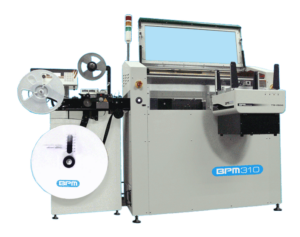 To overcome the limitations of manual device programming, automated device programming systems can be used for high-volume production. These systems typically include multiple device programmers that are integrated into a single robotic platform, which can be controlled by a computer and a central controller. Automated device programming systems can significantly increase the efficiency and speed of programming semiconductor devices. They can also improve the accuracy and consistency of the programming process by automating repetitive tasks. Additionally, automated systems can be equipped with advanced features such as data logging, monitoring, and testing to ensure the quality of the programming process. Marking and media transfer are also possible.
To overcome the limitations of manual device programming, automated device programming systems can be used for high-volume production. These systems typically include multiple device programmers that are integrated into a single robotic platform, which can be controlled by a computer and a central controller. Automated device programming systems can significantly increase the efficiency and speed of programming semiconductor devices. They can also improve the accuracy and consistency of the programming process by automating repetitive tasks. Additionally, automated systems can be equipped with advanced features such as data logging, monitoring, and testing to ensure the quality of the programming process. Marking and media transfer are also possible.
A gang programmer has multiple sockets to program multiple devices at once. It can program a wide range of devices, from small microcontrollers to high-density flash memories. This makes it a versatile option for high-mix production environments where different types of devices need to be programmed.
Inline SMT Programming
Yet another method for programming semiconductor devices is through the use of Inline SMT Programming method. The process involves programming the devices during the Surface Mount Technology (SMT) assembly process. This method is suitable for high-volume production as it allows for the simultaneous programming and assembly of the devices. It is also cost-effective as it eliminates the need for a separate device programmer or ISP process. However, it requires specialized equipment and knowledge to execute properly; in addition, changes to existing workflows are expensive, time-consuming, and require testing to ensure everything is working correctly, delaying production until everything is checked and ready.
Which Method is Best?
There are several methods available for programming semiconductor devices, each with its own advantages and disadvantages. ISP is a cost-effective option for high-volume production but can be complex to set up and use. Off-line manual device programming is straightforward and easy to use but is not a good candidate for high-volume production. Automated device programming systems can significantly increase the efficiency and speed of programming semiconductor devices, improve the accuracy and consistency of the programming process and ensure the quality of the programming process. Inline SMT Programming is a cost-effective option for high-volume production with no changes to the boards, eliminates the need for a separate device programmer or ISP process, but requires specialized equipment and knowledge. The choice of method will depend on the specific requirements of the application and the resources available.
Learn more:
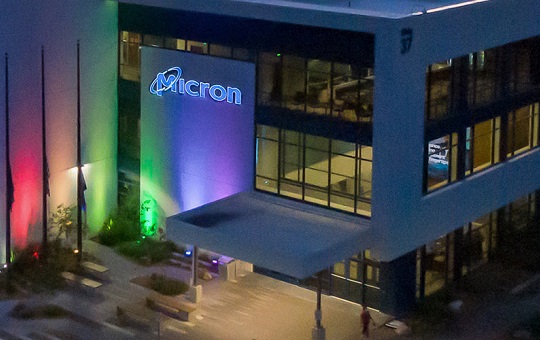
by Scott Bronstad | Oct 5, 2022 | Announcements, Technology
 Micron, the largest manufacturer of memory chips in the United States (current stock price here), plans to invest up to $100 billion dollars over the next 20 years to build a chip factory in central New York, the company announced. A $20 billion investment is planned for the first phase through 2030 and is expected to create nearly 50,000 jobs.
Micron, the largest manufacturer of memory chips in the United States (current stock price here), plans to invest up to $100 billion dollars over the next 20 years to build a chip factory in central New York, the company announced. A $20 billion investment is planned for the first phase through 2030 and is expected to create nearly 50,000 jobs.
The announcement follows the company’s $40 billion project in Boise, Idaho, which coincided with the passage of the US CHIPS Act earlier this year. The New York site could contain four 600K-square-foot clean rooms, equivalent to forty football fields.
Micron aims to increase DRAM production in the United States to 40% of its global output over the next decade (currently, most production is in Asia). New York production will begin in the second half of the decade as demand recovers. Manufacturing in the U.S. helps customers build products into a more secure supply chain, the company said.
Read the full Global SMT article here. | Read Micron’s press release here.
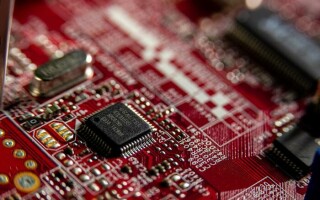
by Scott Bronstad | Oct 4, 2022 | Announcements, Automotive, News, Technology
By Stelios Diamantidis, Senior Director, Synopsys Autonomous Design Solutions
There hasn’t been another time in recent memory where semiconductors have become critical to fueling the electronics industry’s economic framework. The global chip shortage has become abundantly clear, which continues to distress industry sectors from automotive to consumer electronics.
In addition to holding back global economic growth and making life difficult for consumers and businesses worldwide, the shortfall in manufacturing capacity is uneven, affecting legacy process nodes far more than mid-performance nodes.
While semiconductor experts have been hard at work on scoping solutions, the situation has looked insoluble- simply put, semiconductors are extremely hard to design and manufacture; supply chain effects are very difficult to absorb due to this lack of flexibility.
Enter silicon remastering, a new AI-driven design framework with the potential to transform the global chip supply chain. To understand how we must acknowledge the root of the problem: an imbalance in manufacturing capacity. Process nodes built on legacy silicon technologies are in extremely short supply. With them running out, using past technologies to replenish them is no longer a viable option.
Read the full Embedded Computing Design article here
Automotive Device Shortage Update | Bring Device Programming In-House (Video) |

by Scott Bronstad | Sep 19, 2022 | Announcements, News, Technology
On September 15, 2022, during a TV morning show appearance, General Motors CEO Mary Barra predicted the current device shortage will continue through 2023 and possibly beyond. “It’s getting a little better, but I frankly think it’s something that’s going to last into next year, maybe a little beyond,” says Ms. Barra.
GM recently paused Silverado production for a week at the Silao plant where 8,000 people are employed.
In June, GM declared that its Buick-brand vehicles will go fully electric by 2030. Fully Electric Vehicles (EV) have an even higher percentage of microchips than their gasoline-powered cousins, which much be addressed, as well as infrastructure such as recharging stations.
Microchip shortages are more complex than simpler parts. Each programmable device requires a value-added program uploaded to add functionality. Therefore, it’s not as simple as ordering more devices, but also allocating programming services (which can be outsourced or done in-house in a variety of ways– See the top 5 ways here).
To read the full article, click here.
Best ways to Program Devices | Read Article | Bringing Device Programming In-House

Encrypting the programming data and communication between the programming equipment and software can secure data against data breaches and unauthorized access to the programming data.



 To overcome the limitations of manual device programming, automated device programming systems can be used for high-volume production. These systems typically include multiple device programmers that are integrated into a single robotic platform, which can be controlled by a computer and a central controller. Automated device programming systems can significantly increase the efficiency and speed of programming semiconductor devices. They can also improve the accuracy and consistency of the programming process by automating repetitive tasks. Additionally, automated systems can be equipped with advanced features such as data logging, monitoring, and testing to ensure the quality of the programming process. Marking and media transfer are also possible.
To overcome the limitations of manual device programming, automated device programming systems can be used for high-volume production. These systems typically include multiple device programmers that are integrated into a single robotic platform, which can be controlled by a computer and a central controller. Automated device programming systems can significantly increase the efficiency and speed of programming semiconductor devices. They can also improve the accuracy and consistency of the programming process by automating repetitive tasks. Additionally, automated systems can be equipped with advanced features such as data logging, monitoring, and testing to ensure the quality of the programming process. Marking and media transfer are also possible.

